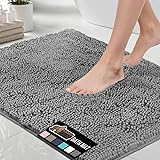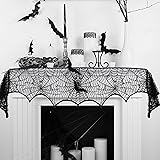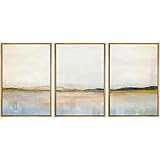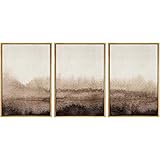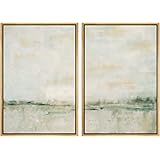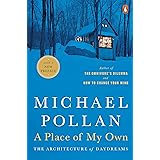Embracing Modern Garden Wall and Fence Designs: A Guide to Contemporary Outdoor Aesthetics
The transformative potential of contemporary garden walls and fence designs is undeniable, offering an evolution beyond mere boundary markers. As shown in the video above, a multitude of stunning options are available to redefine outdoor spaces. These elements are not simply utilitarian; they are integral architectural features that enhance both the beauty and functionality of any landscape. Thoughtful consideration is invariably given to the seamless integration of these structures within the overarching home exterior design, ensuring visual cohesion and elevated aesthetic appeal.Gardens are frequently envisioned as personal sanctuaries, serving as vital spaces for connection with nature, social gatherings, and moments of quiet contemplation. Traditionally, walls and fences were primarily constructed for security and demarcation. However, their role has significantly expanded, becoming pivotal components in the art of sophisticated garden design. These structures are now commonly utilized to define distinct zones, offer essential privacy, and serve as dynamic canvases for creative expression within the modern backyard.
The Evolution of Garden Boundaries: Beyond Mere Functionality
Historically, garden boundaries were perceived as purely functional necessities, often dictating the scope of properties with little regard for aesthetic contribution. However, a significant paradigm shift has occurred within landscape architecture and home exterior design. Today, a fence or a garden wall is viewed as an extension of the home’s architectural language, capable of elevating the entire outdoor living experience. It is understood that these elements contribute significantly to the perceived value and curb appeal of a residence.
Conversely, the modern approach dictates that these elements must harmoniously blend aesthetic sophistication with practical utility. This dual focus ensures that while privacy and security concerns are addressed, opportunities for artistic expression are simultaneously maximized. The design choices for modern garden wall and fence designs are therefore considered critical early in any landscape planning process, influencing the overall mood and character of the outdoor environment. Careful planning is always observed to achieve a cohesive and inviting exterior.
Material Mastery: Crafting with Concrete, Wood, Metal, and Stone
The selection of materials is paramount in defining the character of modern garden wall and fence designs, each offering distinct qualities and aesthetic possibilities. Innovations in material treatment and fabrication methods have significantly broadened the spectrum of available options for homeowners and designers alike. The discerning application of various materials can evoke a specific ambiance, from industrial chic to rustic elegance, all while meeting robust durability requirements.
Concrete: The Canvas of Modernity
Minimalist concrete walls are frequently chosen for their sleek appearance and their ability to provide a contemporary backdrop for lush plantings. These structures are often characterized by clean lines and a smooth, unadorned surface, or they may be finished in a range of neutral tones to complement diverse planting schemes. The inherent versatility of concrete allows for various finishing techniques, from polished surfaces to textured renders, offering a nuanced tactile experience. Such walls can be left plain to emphasize their architectural purity, or they may be subtly enhanced with geometric patterns, intricate textural designs, or even embedded LED lighting systems for dramatic nocturnal effects. The structural integrity of concrete also ensures long-term performance in varied climatic conditions, making it a preferred choice for enduring landscape features.
Wood: Timeless Warmth, Contemporary Forms
Wood, a timeless material, consistently imbues any garden with an undeniable sense of warmth and natural charm. Modern wooden fences are often envisioned with horizontal slats, spaced with wide gaps to create a sense of openness while still defining boundaries. Alternatively, intricate lattice work is employed to provide a delicate screen, fostering partial privacy and supporting climbing plants. To ensure longevity and resistance against environmental elements, treated wood is typically specified, necessitating minimal maintenance. A variety of natural stains or painted finishes can then be applied, allowing for extensive personalization that aligns with the desired aesthetic of the modern garden wall and fence designs.
Metal: Sleek, Durable, and Adaptable
For those aiming to achieve a sleek, industrial aesthetic, metal fences are a highly suitable option, offering both durability and low maintenance. Designs range from precisely perforated panels that allow light and air to filter through, to decorative wrought iron elements that add a touch of artisanal craftsmanship. Powder-coated aluminum is a popular choice due to its corrosion resistance and wide array of available colors and finishes. These materials are inherently robust, capable of withstanding harsh weather conditions with little degradation over time. Furthermore, the adaptability of metal allows for custom fabrication, ensuring that unique patterns and architectural styles can be accommodated within the overall landscape design.
Stone: Enduring Elegance and Textural Depth
Stone walls are revered for their inherent durability and striking beauty, contributing a sense of permanence and gravitas to any outdoor space. Whether rustic dry-stacked stones are utilized, conveying a natural, rugged aesthetic, or highly polished natural stone slabs are meticulously placed for a refined look, these walls invariably exude elegance. Textured stone cladding offers another sophisticated option, allowing for the integration of natural materials onto existing structures. These walls are known to complement gardens of all styles, from formal to contemporary. For an enhanced dramatic effect, stone walls are often paired with soft uplighting, which serves to highlight their unique textures and variegated colorations after dusk, transforming them into captivating nocturnal features.
Innovative Design Integrations for Modern Backyards
The hallmark of superior modern garden wall and fence designs lies in their innovative integration of various elements, extending beyond basic material selection. Designers are increasingly challenged to consider how these boundaries interact with light, plant life, and structural functions, creating a holistic outdoor experience. These integrations are not merely add-ons; they are conceived as fundamental components of the overall design narrative, contributing to both the visual and sensory appeal of the space.
The Art of Material Blending: Harmonizing Textures
Blending diverse materials is a sophisticated design technique frequently employed in modern garden design to create visual interest and add dynamic touches. Consider, for example, the robust combination of stone walls juxtaposed with warm wooden accents, or sleek metal panels framed by vibrant greenery. Concrete walls can also be artfully adorned with decorative tiles, introducing unexpected patterns and bursts of color. This thoughtful combination of textures and finishes ensures that a garden wall or fence is perceived not as a monolithic barrier, but as a richly layered architectural element. The interplay between disparate materials is always strategically employed to create a harmonious yet stimulating visual experience.
Vertical Greenery: Living Walls and Eco-Integration
Vertical gardens, often referred to as living walls, represent a burgeoning trend in contemporary landscaping, integrating biophilic design principles into urban and suburban environments. These innovative designs involve the direct incorporation of plants into the structure of a wall, cultivating a lush, verdant surface that is both aesthetically pleasing and environmentally beneficial. They are particularly advantageous for smaller spaces or urban gardens where horizontal planting areas are limited, offering a natural element without consuming valuable ground space. Beyond their visual appeal, living walls are known to improve air quality, reduce ambient temperatures, and provide habitat for local wildlife, embodying a profound commitment to eco-integration within the modern garden wall and fence designs.
Strategic Illumination: Transforming Ambiance
Lighting is an indispensable tool for transforming garden walls and fences into magical features after the sun sets, profoundly impacting the outdoor ambiance. Integrated LED strips can be discreetly installed to cast a soft glow along the length of a wall, emphasizing its architectural lines. Spotlights are commonly utilized to highlight specific textures or plantings, creating dramatic focal points. Furthermore, strategically placed hanging lanterns can introduce an ethereal quality, enhancing both the functionality and the overall mood of the space. For a distinctly futuristic aesthetic, backlit panels or glowing edges are increasingly favored, providing a contemporary luminosity that is perfect for ultra-modern gardens. This careful deployment of light extends the usability of outdoor areas well into the evening hours.
Functional Aesthetics: Privacy, Sustainability, and Utility
The contemporary demand for garden walls and fences extends beyond mere visual appeal, deeply integrating principles of functionality, sustainability, and utility. Homeowners and designers are actively seeking solutions that not only look exceptional but also perform effectively across multiple dimensions. This necessitates a thoughtful consideration of how these structures contribute to personal well-being, environmental stewardship, and practical outdoor living. The emphasis is on creating spaces that are both beautiful and genuinely liveable.
Engineered Privacy: Form Meets Seclusion
Privacy remains a paramount concern for many homeowners, and garden walls or fences are instrumental in establishing a sense of seclusion and personal retreat. Tall structures, designed with minimal gaps, are specifically engineered to shield outdoor spaces from intrusive views while simultaneously maintaining an elegant aesthetic. Dense hedges offer a living, green alternative, providing both visual and acoustic privacy, thus creating a serene buffer. Frosted glass panels are another sophisticated option, allowing light to permeate while obscuring visibility, thereby striking a balance between openness and personal space. These varied solutions ensure that a homeowner’s sanctuary can be fully enjoyed without external disturbances, exemplifying the thoughtful integration of form and function.
Sustainable Choices: Eco-Conscious Garden Fencing
Sustainability is recognized as a core tenet in modern design, influencing material selection and construction methodologies for garden fencing. Reclaimed wood, salvaged from older structures, and recycled metal are just a few examples of materials that seamlessly combine stylish aesthetics with environmental responsibility. Eco-friendly concrete, incorporating recycled aggregates or lower-carbon binders, is also increasingly specified to minimize environmental impact. Furthermore, the concept of “green fences,” realized through dense shrubs or climbing plants, offers a dynamic, living boundary that enhances biodiversity and contributes to a healthier ecosystem. These environmentally conscious choices allow homeowners to align their outdoor living spaces with broader ecological values, signifying a commitment to a more sustainable future.
Multifunctional Walls: Seating, Planters, and Water Features
The integration of functional features directly into garden walls significantly enhances their versatility and utility within the modern landscape. Built-in seating, for instance, transforms a boundary into a comfortable spot for relaxation and enjoyment of the garden scenery. Integrated planters provide dedicated spaces for vibrant flowers, lush greenery, or even edible plants, bringing life directly to the wall structure. Additionally, water features built into garden walls, such as cascading fountains or trickling streams, introduce elements of movement and sound, fostering a sense of tranquility. These luxurious touches can be harmoniously integrated into stone, metal, or concrete walls, creating a seamless and immersive design that enriches the overall outdoor experience. Such enhancements elevate modern garden wall and fence designs from mere dividers to dynamic, interactive elements.
Defining Entryways and Compact Spaces
The approach to modern garden wall and fence designs necessitates a keen focus on how these elements facilitate access and define space, especially in urban or smaller plots. Entryways are more than just points of passage; they are crucial transition zones that set the tone for the entire garden experience. Similarly, compact gardens demand inventive solutions that maximize perceived space while retaining essential functionality and aesthetic appeal. The efficient use of every square foot becomes a design imperative.
Gates as Statements: First Impressions Matter
Gates and entryways are undeniably essential components of comprehensive garden design, serving as the threshold to one’s private outdoor domain. Modern gates are frequently distinguished by their clean lines, artistic details, or bold color choices, creating an immediate and welcoming visual impact. These design elements are carefully chosen to complement the overall aesthetic of the surrounding modern garden wall and fence designs, ensuring a harmonious and inviting entrance. The gate, therefore, becomes a significant design statement, reflecting the homeowner’s personal style and offering a preview of the landscape within. Precision in alignment and material continuity are always considered to ensure a sophisticated first impression.
Optimizing Compact Gardens: Smart Boundary Solutions
Compact gardens frequently benefit immensely from lightweight and versatile fence solutions, which are meticulously designed to maintain an open and airy feel while clearly defining the available space. Slim partitions, such as narrow vertical panels or slender metal screens, can effectively delineate areas without imposing visual bulk. Bamboo screens offer a natural, renewable option that introduces organic texture and a gentle sense of enclosure. Mesh panels are also commonly employed, particularly when desiring a boundary that allows for maximum light penetration and an uninterrupted view. Moreover, glass panels are increasingly specified for their ability to provide an unobstructed visual connection to the broader landscape, creating an illusion of expansive space. These smart boundary solutions are both practical and visually appealing, proving that even in small outdoor areas, sophisticated design can flourish.



